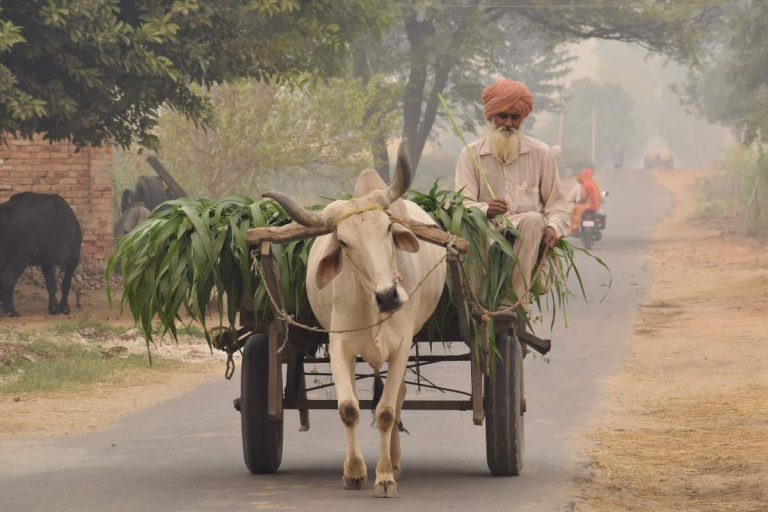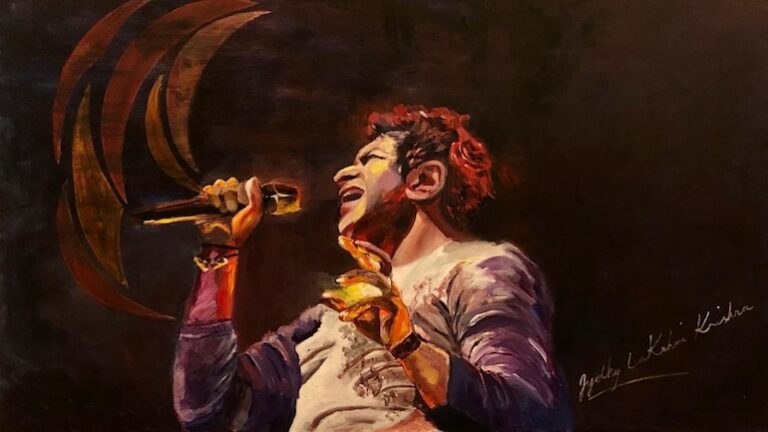SWOT analysis of National Education Policy 2020

Ritambhara is currently working as Director of Advocacy at the Center for Law and Policy Research. She has keen interests in areas of public policy, law, and political & social system of the country. Meenakshi Yadav is presently a research scholar in the field of education, bibliophile, and human resource personnel who is fascinated in psychology.

[responsivevoice_button voice=”US English Female” buttontext=”Read out this Theel for me”]
We recently celebrated our 74th Independence Day. In his Independence Day speech, the Prime Minister has called for an “Atmanirbhar Bharat.” Holistic education, health, and good jobs will make the people of the country self-reliant who will pave the way for Atmanirbhar Bharat. Education fosters personal development and self-fulfillment and also encourages the individual to develop his mental, physical, emotional, and spiritual talents to the fullest.
The recently released National Education Policy 2020 lays out an encouragingly hopeful vision for the future if successive governments can stay true to it. After long deliberation and two committees since 2014, The New Education Policy was released by the Ministry of Human Resource & Development (MHRD) on 31st July 2020. Although the policy has emphasized a lot of positives, the biggest challenge ahead of the government is the nationwide implementation and achieving the learning outcomes. As the key challenges in the education sector are Accessibility, Affordability, and Quality, this article attempts to do the SWOT analysis of National Education Policy 2020
Strengths
- The policy has strengthened the foundation of education by re-envisioning the school curriculum from the 10+2 model to 5+3+3+4 for the holistic development of a child; 80% of the cognitive development occurs during this stage.
- Multiple entries and exit from any course is a flexible move which will enable students to get a ‘basic certificate’ if they complete a year if two ‘diploma certificates’ will be awarded and once the completion, of course, a ‘degree’ will be given, hence no loss of years will be there.
- The introduction of greater flexibility in the choice of subjects and removing the barriers between arts and sciences, curricular, co-curricular and extra-curricular, and sports and vocational crafts would enable students to study and progress at their own pace.
- The allocation to the education sector in GDP from 4.43% to 6% of GDP is a welcome step. The policy targets Gross Enrolment Ratio in higher education to be increased to 50% (currently 26.3%) by 2035 and Universal literacy by 2025 for primary schools.
- Assessment will shift to a formative style that encourages higher-order thinking skills, critical thinking, and conceptual clarity, which is a great step moving away from rote learning practiced in our schools.
- Gender sensitivity is also an integral part of the curriculum, which will sensitize students towards gender issues.
- The focus on the suitable infrastructure development at schools to make access easier for children with disability and inclusive classrooms are an appropriate measure to create a conducive environment in totality.
- The teaching of contemporary subjects at middle and secondary stages: Artificial Intelligence, Design Thinking, Holistic Health, Organic Living, Environmental Education, Global Citizenship Education (GCED) is another feature in the cap.
- Inclusion of the ‘Classical Language’ as an option will strengthen language proficiency.
- Teaching in the mother tongue at the primary level, and if possible, up to class 8 has been a welcome move as all over the world, educationists are unanimous that teaching in the mother tongue in the early years promotes easier learning, better understanding, and improved learning skills.
Weaknesses
- The policy’s failure to address the role of the private sector in school education coherently—aside from reiterating existing tropes about philanthropy—is somewhat disappointing.
- Extending compulsory education both to preschool and secondary education will require a large sum of investment; however, there are no specific provisions mentioned in the policy regarding the methods of mobilizing funds for the same.
- Also, clubbing 3 years of preschool with the first two grades of the primary can create further challenges for the Right of Children to free and Compulsory Education Act (RTE).
- The successive reports of ASER (Annual Survey of Education Report) picture a sorry state of affairs in the education system. The poor learning outcomes, gaps between textbook teaching and real-life vocations, huge imbalance in rural-urban, private-public education sectors. As per ASER 2019, only 16% of children in Class 1 in 26 surveyed rural districts can read the text at the prescribed level, while almost 40% cannot even recognize letters.
- The current global pandemic has shown huge challenges for the education system in various ways. However, the NEP does not talk about it or rather shows concern in terms of upcoming pandemic related challenges.
- The salubrious domain of learning, along with the ongoing Happiness Curriculum, which is currently implemented in schools of Delhi government, should have been included for engaging students and connecting them with mindfulness.
- The cost of training the in-service teachers will also require time, energy, and resources for which the government has to allocate proper resources and infrastructure.
- According to the India Internet 2019 Report, 99% of users in the country access the internet through mobiles, not laptops or computers. Laptops and desktops usage is only 2% and 1% respectively in rural areas and 6% and 4% respectively in urban areas of the country. Further, internet penetration is still very poor and stands at a mere 27% in rural India. Under the Bharat Net program, more than 40% of the villages are yet to be connected to the internet grid that creates a disadvantageous situation for rural students.
Opportunities
- A holistic report card is what the NEP 2020 is envisaging, where the performance of a student will be measured, keeping in mind all the three domains of learning: cognitive, psychomotor, and affective, which will help them in understanding the world from all the aspects of life.
- It indeed is a welcoming step for the students as well as authorities to pave the way for foreign universities to set up campuses in the country, which will not only provide more research-based options for students, increase competency but can also stop brain drain in the longer run.
- The academic credit stored in a digital locker will be like a bank credit through which a student will be able to resume education after a break, as specified by the higher education commission later.
- An autonomous body, the National Educational Technology Forum (NETF), will be created to provide a platform for the free exchange of ideas on the use of technology to enhance learning, assessment, planning, administration, both for school and higher education.
- The best idea in the policy is ‘Pairing Schools’ or say ‘twinning’ of one government school with one private school which enables the students to see the different aspects of learning by doing, the infrastructure, teaching methodology and the whole set up of education from different perspectives.
- Keeping in interest, versatility, and uniqueness of an educator is one such move that has brought hope for educators by giving them more autonomy in choosing aspects of pedagogy in classroom teaching, in lieu of chalk & talk, lecture, or audio-visual aids. Teachers should be encouraged to research their own practices for reflection, review, and self-assessment.
- This policy has been released at the opportune moment when it has a huge demographic dividend. If this policy has been implemented in letter and spirit, it’s going to bring a transformational impact for the future of the youth.
Threats
- The three-language formula is not appreciated by many states like West Bengal, Andhra Pradesh, and Tamil Nadu, as making Hindi as a compulsory language will look like an imposition on the people south of Vindhya.
- The NEP 2020 itself is an exercise of imposing uniformity and standardization along a single axis of control and power, which is paradoxical given India’s size, population, diversity, and constitutional federalism. It might be resisted by many States as education is in the concurrent list.
- The free breakfast scheme proposed, though, a great initiative, will increase the fiscal burden and add on to an already mid-day meal scheme that has seen irregularities and corruption over the years.
- There is a mismatch in the skill imparted in educational institutions and jobs available.
- The majority of experts feel that though policy speaks of encouraging reason and critical thinking, campus activities, the real actions on the ground differ, as can be seen from attacks on the campus and critical thinkers in the last few years.
- The COVID-19 pandemic has shown that there is a need to build a huge digital infrastructure for providing digital education.
- With unemployment and job losses, remuneration can be kept low, and employers can fire the educators in the knowledge sector that there are plenty more mediocre teachers and unskilled teachers to take their place.
- As per the 2016 All India Survey on Higher Education, nearly 22 million students (65%) are enrolled in private institutions in various courses. The evidence of the movement of the education system in India – in the direction of becoming more privatized and costlier – is thus clear and unambiguous.
- The regulatory mechanism to address the unchecked proliferation of self-financing colleges is another biggest concern.
Though changing the name to the ‘Ministry of Education’ from the Ministry of Human Resource Development is a welcome symbolic step, the focus of the government at the Centre and State level to seize this moment and bring about a transformational change in India’s education sector. Hence the implementation should match aspirations of the policy. As correctly pointed by Ivan Illich in his writings said, ‘The pupil is “schooled” to confuse teaching with learning, grade advancement with education, a diploma with competence.’ Therefore, the focus should be on quality than quantity.
Featured Image Credits: Wallpaperflare
The opinions expressed in this piece are those of the authors. They do not necessarily reflect the opinions or views of their parent organisations.







